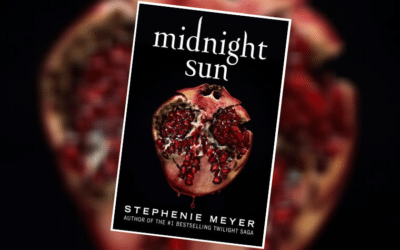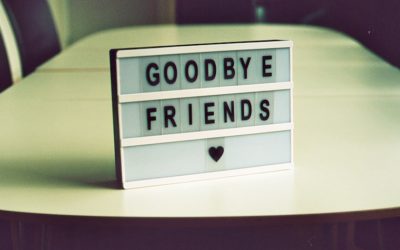I was not exposed to wine until I was out of college because at Clemson we drank two things: beer and Southern Comfort. But in my adulthood, I have embraced wine and when I say “embraced,” I mean I drink it. Sure, I try to educate myself so I can avoid looking dumb (my biggest motivator in life) but I mostly order considering something very basic: I like what I like.

But why do I like what I like? How much of wine is taste and how much is bullshit? How much of my buying decision is based on a big driver of buying decisions, aka the price tag? If there is ever a good place to use the shrug emoji guy, it’s me talking about wine. ¯_(ツ)_/¯
In her new book Cork Dork, Bianca Bosker takes us vin amateurs on her own journey from wine dilettante to legit certified sommelier. (Yes, I said journey. Yes, I watch The Bachelor. Bianca, will you accept this rose because I inhaled Cork Dork, one of the best books I’ve read this year.) Bosker looks at wine from all angles. The taste. The smell. The science. The price. The snobbery. The insanity. The pretense. The art. The bunk. The love. The love-turned-obsession.
Cork Dork
When I drank a glass of wine, it was if my taste buds were firing off a message written in code. My brain could only decipher a few words. ” Blahblahblahblah wine! You’re drinking wine!”
Armed with a natural curiosity, journalist Bosker immerses herself in the world of New York City wine culture, giving herself a year to learn about wine and become expert enough to pass the Certified Sommelier exam. Coming from the tech world, Bosker is astounded/flummoxed/fascinated by the men and women who have made “grape juice” their life’s work and passion. And she wants to join their ranks.

Blind tastings at 10 o’clock in the morning at Eleven Madison Park? Hangovers by 2 PM because no matter how much you spit, the alcohol finds a way? Learning wine by taking a job literally lugging it up from a cellar or down from a death-trap attic? Check, check, check.
You cannot succeed in the world of wine alone, without connections, so Bosker finds a “cork dork” to take her under his wing. Morgan Harris is a sommelier—somm, to those in the know—from Charlie Palmer’s Aureole near Times Square. Morgan is an enthralling wine weirdo, and that is meant as a compliment. If you are going to love something, at least be weird about it.
Despite his loft pronouncements, Morgan, as well as many of the other somms I would come to know, was not without a sense of irony. He knew how ridiculous his job could appear to a causal observer—a glorified, overpaid waiter with a drinking problem.
Wine is about pleasure, and that pleasure is derived from our physical our senses—all of them. But how do we taste? What does the science say? Bosker consults with professors, doctors, even an MRI machine to figure out what our brains, taste buds, noses, and eyes are doing when we drink wine. Becoming a better drinker requires time and practice. It requires training, reading, flash cards, learning to inhale, and learning to spit. You thought you knew how to breathe and hit a spittoon? Oh, bless your heart!
How much is that bottle on the wine list?
At best rich civilians shared the somms obsession with great wine. At worst, they bankrolled the staff.
A few years ago, I was at church—in front of my TV watching CBS Sunday Morning—and they ran a story about the problem of counterfeit wines. I found myself agog and aghast, not at the people who sold fake wines, but at the rich people who got swindled. So you’re telling me that the less-bad Koch brother, Bill, got taken for over $4 million on counterfeit wines? Boo-fucking-hoo.
Part of my discomfort with the world of wine comes from it being a place of the elite and the rich. I don’t get people who can spends thousands on a bottle that could turn out to be piss, and as Bosker notes, will eventually turn into actual piss once it’s imbibed.
But the somms that Bosker interacts with understand that a really expensive vintage is just one facet to the world of wine. Pleasure can be found in a $20 bottle or in a $2,000 bottle. (Note that pleasure can never be found in Yellowtail.) As Bosker learns her trade, she passes on good advice. Never be afraid to tell the somm your budget. A good somm can find what you will like in your price range, if you are honest.
Competence is sexy
As I read, I realized that much of my enjoyment came from watching Bosker grow more and more competent, by doing something I have no desire to do. It’s fun to dabble in someone else’s crazy. I was, without envy, pulling for her to succeed in something I myself would never attempt.
It’s a problem that in today’s political and pop culture world, expertise is growing less valued. “Anyone could fix that problem!” “Anyone deserves to be famous, regardless of talent!” In the world of wine, the impostor is not embraced. It’s admirable to Bosker and the somms want to be competent. Being a subject-matter expert on fermented grapes is seductive.

The most compelling part of the book is when Bosker arrives at her sommelier exam in Virginia Beach, Virginia. (The NYC exam is sold out, natch.) She finds a totally strange world in the touristy beach town, befriending Annie Truhlar who loves wine but also needs to pass her somm exam for practical reason: to make a living. “Wine is life” takes on a different meaning to different people. With Annie, there are actual stakes and Bosker’s play-by-play of her own exam is as fun and as “nail biting” as any good sporting event. Who needs the Olympics when you have wine service and a blind tasting! BI-AN-CA! BI-AN-CA!
So what wine do you like?
For all of our talk, for all of our focus, for all of our studies, for all of this highfalutin posturing that we go about we have not gotten people to drink! More! Wine! – Paul Grieco, owner of Terroir
A somm’s job is that of matchmaker, to connect people with wine. Somms are judging you to see what you currently like to drink and to see what they can get you to like to drink. Do you enjoy a “call wine”? A well known grape like Sancerre or California Cab? Do you like “cougar juice”, a sweet oaked Chardonnay? Or do you prefer a BSD (Big Swinging Dick) in your glass, with a big price tag along with a big flavor?
Don’t get me wrong—of course I’d bring you the Chardonnay or Doc’s cider and I’d be happy if you are happy. However, in the back of my mind I’d be thinking in the grand scheme of what I could be giving you, the Doc’s is boring. Watery! The Cornouaille is a mind-altering mess of blue cheese, cidar vinegar, and Shetland pony that stinks and is phenomenal and utterly perplexing.
Like I said, I have no will to go to the lengths that Bosker has gone to in the quest to improve her palette, but some of her research and advice has rubbed off on me. I was in a restaurant on Sunday and instead of ordering a grape I knew, I picked something I didn’t know. According to Bosker, the wine list contains stuff that will sell easily because we order the familiar. A Chardonnay. A Pinot Noir. A Malbec. If you find a grape you don’t know, give it a try because the somm probably put that wine on there for a reason: because it’s a good wine. So I ordered a Nebbiolo along with my pasta and I loved it. Did it have high acidity? A lot of tannin? Did I get a citrus note or something musty? ¯_(ツ)_/¯
It tasted like…good wine! I trusted the somm who put in on the list. That person knew what they were doing.

From Penguin: Bianca Bosker is an award-winning journalist who has written about food, wine, architecture, and technology for The New Yorker online, The Atlantic, T: The New York Times Style Magazine, Food & Wine, The Wall Street Journal, The Guardian, and The New Republic. The former executive tech editor of The Huffington Post, she is the author of the critically acclaimed book Original Copies: Architectural Mimicry in Contemporary China (University of Hawaii Press, 2013). She lives in New York City.




